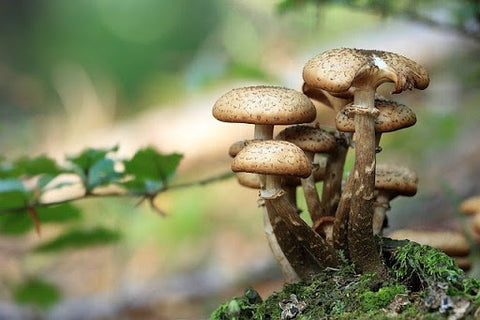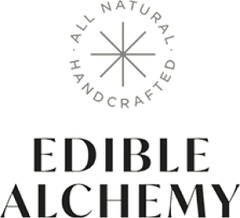Mushrooms are fascinating and unique life forms, and so is their life cycle. They are a fleshy, fruiting body of some species of fungi - so, not a plant or animal. They have their own way of generating life, feeding, growing, and eventually, dying.
When we think of eating mushrooms, we often consider them vegetables. Of course, they aren’t. They have no chlorophyll, so they don’t create food by photosynthesis like plants. They have a network of fungal threads called mycelium. The mycelium grows into and around nearby food sources. The mycelium secretes digestive enzymes, and then it absorbs the digested nutrition for the mushrooms.
Some mushrooms are nutrient-dense and edible, while many others are deadly to consume.
Related: Best Cordyceps to Buy in 2021
How Long is the Mushroom Life Cycle
The mushroom life cycle varies depending on the size, environment, and kind of mushroom. Some mushrooms live their entire life cycle in one 24 hour period, while others will take longer. For instance, Oyster mushrooms are fast-growing and take up to four weeks to mature. But Shiitake mushrooms take between 6 to 12 months to mature. In a moist, conducive environment, mushrooms can grow quickly and consistently. But in drier locations, mushrooms may take longer to develop.
Once mature, a mushroom can live from just a couple of days to many years. The mycelium network, once established, can last for hundreds, even thousands of years.
The Mushroom Life Cycle:
Most of the mushroom life cycle is hidden from us, but here are the steps as we understand them.
Innoculation
The life of a mushroom begins with a spore. Hundreds of thousands of spores are released from under a grown mushroom’s cap. The spores, which are so small they can’t be seen by the naked eye, are male or female. They may land near the original mushroom, or the spores may land quite far away on a windy day. If the spores find favorable conditions, they will germinate.
Spore Germination
Once germinated, mitosis divides the spore into thread-like fibers, called hypha. The tangled network of hyphae threads begins to seek a spore that’s the opposite sex and a genetic match. It will travel as far as it has to, to find its match.
When the hypha meets up, they combine to create a cell consisting of two nuclei. When the network becomes a large colony, sufficiently dense and organized, we cease calling it hyphae and begin calling it mycelium.
Related: Knowing the Difference Between Chaga and Reishi
Mycelial Expansion
In the growth process, the mycelium excretes digestive enzymes into organic matter, then absorbs the, now digested, nutrients. To accomplish this, the mycelium expands exponentially in an environment that may or may not be friendly. It defends itself from the unfriendly elements with protective enzymes and other compounds. You can think of it as acting as the immune system of mushrooms.
Are you looking for a potent mushroom tincture? Check out the wide variety of organic, extracted mushroom tinctures at Edible Alchemy.

Organic 14 Mushroom Blend Extracted Tincture
Hyphal Knot
When the hyphae find each other and combine, they have all the genetic material of the two spores, which is everything needed for the coming mushroom. The hyphae entwine so vigorously, they create a hyphal knot.
The hyphal knot is the tiny, pinhead-shaped baby mushroom, also called a primordium. This is the point at which the growth is visible to the grower.

Primordia Formation
As the primordia forms, the mushroom produces enzymes and makes the most of the materials available for its growth and maturity—a cap develops and eventually a stem.
Fruitbody Selection
Not every primordium that forms will become a mature mushroom. Of the thousands of primordia, a selection takes place to find the ones that have the best chance of maturing into a healthy fruitbody. Resources for growth are optimized by focusing on the most promising candidates.
Mature Fruitbody
The fruitbody is what we call the mature mushroom that appears as a stem with a cap. This is the result of a favorable environment, yielding strong primordia. The final fruitbody consists of a stem, scales, gills, spores within the gills, and cap. The spores that develop with the mushroom are the sexual reproduction of the mushroom’s life cycle. Some fungi don’t produce sexually, and some asexually.
Spore Release
The life cycle is finally complete when the fruitbody releases spores into the environment, just as was first done to begin its creation.
Where Do Mushrooms Grow
Most of us know that mushrooms like dark, cool, damp places to live. They thrive in temperatures between 55 degrees and 60 degrees Fahrenheit, with no direct sunlight and damp draughts. Although, with the wide variety of mushrooms, some don’t fit into the typical parameters. Some mushrooms do well at cooler temperatures.
If you’re trying to grow mushrooms for your own use, consider doing this in your basement, closet, or even cabinet under the sink. Do your growing in the winter if your location becomes excessively hot during the summer. It doesn’t have to be completely dark for mushrooms to grow, but light should be low. Some species of mushrooms grow best outdoors in logs on other favorable spots, although they will take longer to mature.
Related: 10 Best Medicinal Mushrooms to Have
The Mushroom Life Cycle in a Nutshell
Mushrooms grow from microscopic spores that are released from the gills of a mature mushroom. The spores land all around the mushroom and sometimes a great distance away. The spores grow thread-like roots called mycelium, which expand aggressively in search of a spore of the opposite sex that is also a genetic match. Eventually, a primordium is formed that will grow into the mushroom as we know it. It’s a fascinating process.
Are you ready to optimize your health? We have everything you need to get started. Visit Edible Alchemy today!


